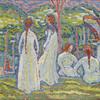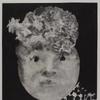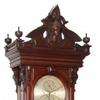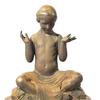The Art of De-cluttering: It’s Never Too Late
- NEW BRAUNFELS, Texas
- /
- March 17, 2021
“We’re finally seeing the light at the end of the pandemic tunnel. But after a year at home telling ourselves to get organized, how many of us still haven’t gotten around to doing so?” asks Lark Mason, founder of iGavel Auctions, the international auction platform. “Each of us wanted to start the process, but between Zoom meetings, pod playdates and binge-watching season four of The Crown, the clutter has only gotten worse. Don’t feel guilty! Spring is here and there’s no better time to take a good, hard look around you and ask yourself: is it time to deaccession—to use the museum term—some of your once-treasured possessions?”
As an expert on Antiques Roadshow, president of the Appraisers Association of America, and a leading Asian art specialist, Lark Mason has spent years surrounded by stuff, some of it great, some of it not so much. During this past year he’s had time to reflect on how to practice the art of de-cluttering. “There are plenty of guidelines for ditching clutter à la Marie Kondo, but below you’ll find 10 of mine—and it’s some of the best advice I have to offer.”
1. Know what you own
Before you head to the thrift shop to make a donation, make sure you know the worth of what you are planning to give away. Auction houses and platforms such iGavelautions.com, sothebys.com or christies.com offer free services to assess an object and offer a valuation.
2. Try moving your items around
Art can become too familiar when it has stayed parked too long in the same location. This is why museums have exhibitions that bring together works by disparate artists—so their works can be viewed in fresh relationships! Relocate paintings, rearrange shelves, try new combinations and curate your own in-home exhibition. Think of finding different locations in the house where items can be temporarily be displayed, not fixed in one spot.
3. Rotate
That collection of fly reels on a shelf in your rustic cabin is exceptional, but it might look even better if it was pared down from 22 to, say, six or seven. Taking a few out of the composition allows the others to breathe and be better seen and appreciated. An airier space around an object helps the eye notice aspects that were otherwise obscured by an overabundance of shapes and colors.
4. Look for interesting shapes and colors
Take a fresh look at the items on your walls and shelves. They have shapes but also color. Mix ’em up! In this image are shelves that give open space to the objects, which interact with the other objects, making for an interesting display that combines art, collections and emotionally connected items. The shapes and colors and associations can be easily changed to keep the space fresh.
5. Remove forever those things that you’ve gotten burned out on
Get rid of the dud items bought on a whim, a well-intentioned gift, or something you inherited and placed in your home only to avoid the guilt. And while you’re at it, get rid of the guilt, too. They are not worth hanging on to and are affecting how you view other items. Pack them up and give them away or sell them. Time to choose.
6. Take time to empty the closets and storage spaces
With all the extra time the pandemic has provided, there is no better use of that time than to edit your storage spaces. Open those drawers with dated place-card holders, half-burned candles, stained placemats and your aunt’s gift (that thing again). There are few things more gratifying and exhilarating than getting rid of stuff you don’t use or need. Tackle this task drawer by drawer, closet by closet.
7. Give away or sell
Most people put things in storage or in closets and drawers because they cannot decide to give them away or sell them and have convinced themselves that “One day I will need this.” That one day rarely happens. Happily, most items you own are probably desirable to someone—just not you any longer. Think about family members and friends who might be interested in them and brighten their day with a gift. But before you send it off to a new home, find out what it’s worth.
8. Open your eyes
Look at the things you have and consider whether you might want to take a step towards actually collecting other similar items. The pleasures of collecting are abundant, not the least of which are acquiring knowledge about a particular subject and gaining association with other people who share your interest.
9. If it’s broken, it’s probably time for it to go
Lots of items, especially old ones, end up in deplorable condition and the best way to avoid damage is to regularly assess where and how the item is displayed and make sure the surrounding environment is conducive to protecting the object. If the item has been damaged, how you see and appreciate it will be affected, and probably not for the better. Consider removing these items from your space.
10. Get an appraisal
Once you decide to keep an item and have given it a good dusting—commonly called conservation—then get a professional appraiser to value it for you. The Appraiser’s Association of America is the premier international appraisal association, with generalists and experts in every category of the arts www.appraisersassociation.org.
About Lark Mason
With locations in New Braunfels, Texas and New York City, Lark Mason Associates, the eponymous, auction house specializing in Asian, ethnographic, and ancient works of art, was founded by Lark Mason after many years as an expert at Sotheby's New York.
Mason served as a General Appraiser from 1979 until 1985, and as a Senior Vice President and specialist in Chinese art with Sotheby's Chinese Works of Art Department from 1985-2003. From 2000-2003 he concurrently was a Director of Online Auctions for Sothebys.com. He also served as a consulting curator at the Trammel and Margaret Crow Collection of Asian Art in Dallas, Texas from 2003-2009. He is a generalist in American and European works of art and paintings, as well as an expert in the field of Chinese art and has valued and advised many private collectors and institutions.
Lark Mason Associates regularly hosts auctions on the iGavel Auctions platform and has an established history of record sales of Chinese and other works of art and holds the record for the highest price achieved for any work of art in an online sale, for a painting sold in May 2014 that realized close to $4.2m. Mason, the owner and CEO of iGavel Auctions, is noted for his regular appearances on "The Antiques Road Show."
.
.
















